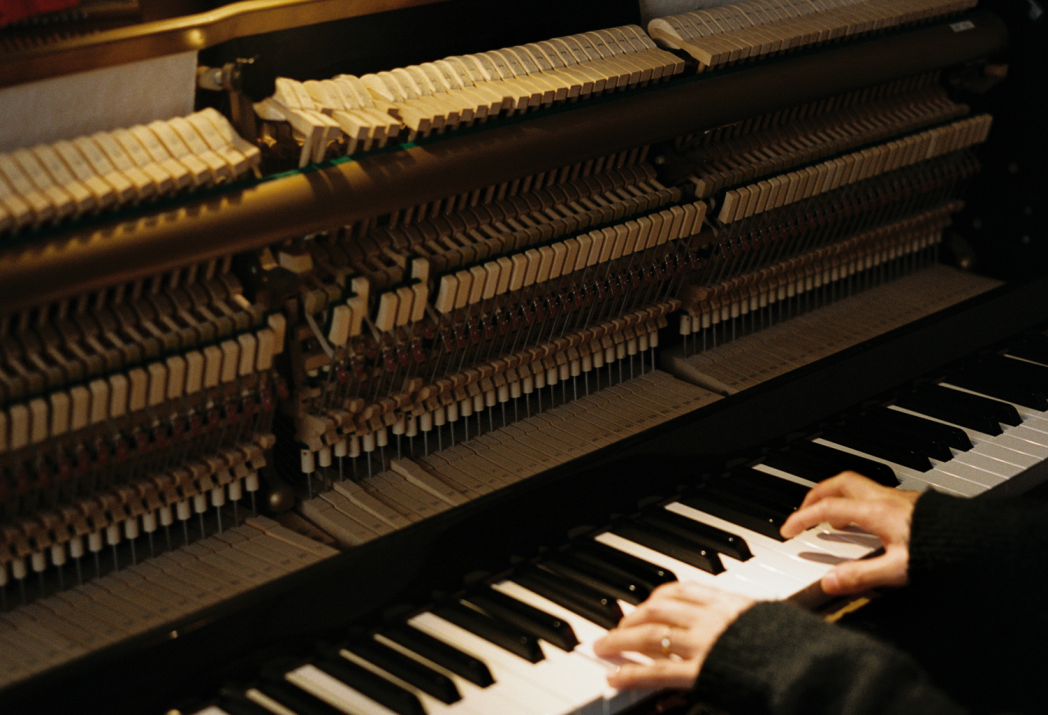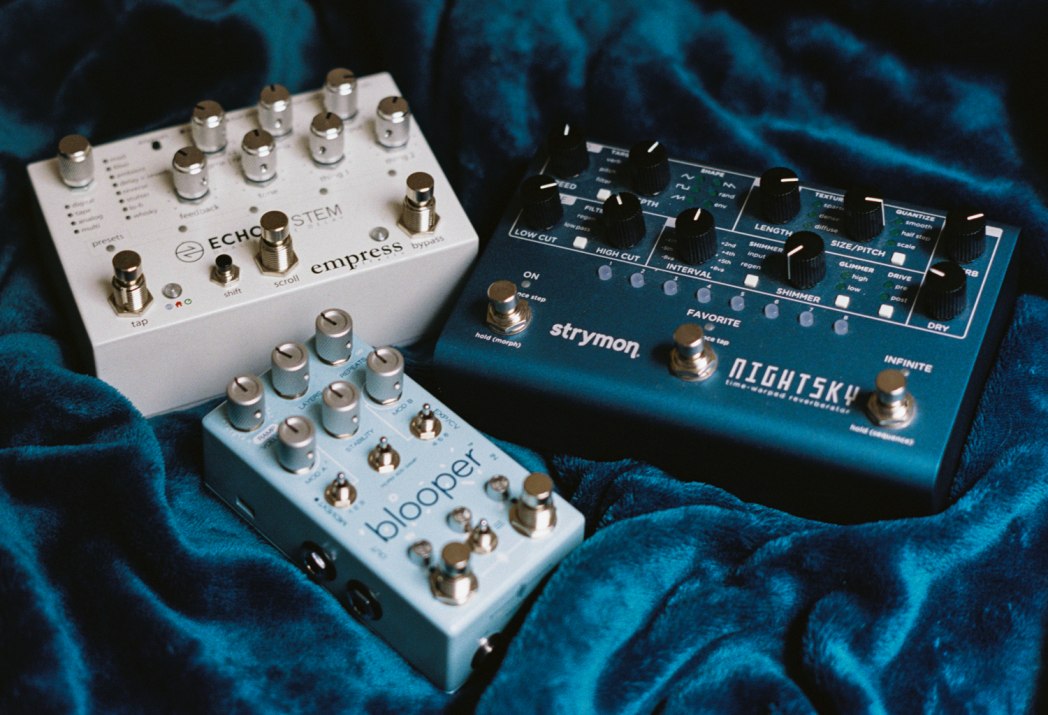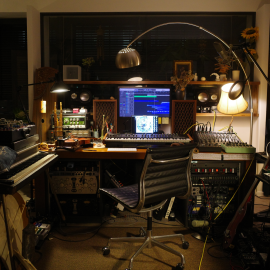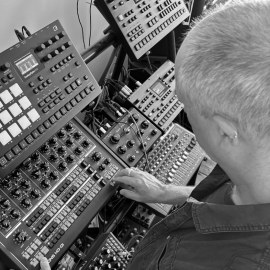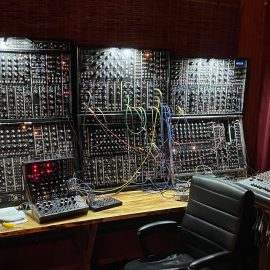Let’s start at the very beginning. Can you tell us how you got involved in composing, and what was your very first piece of gear?
My dad bought an Otto Marquardt upright piano when I was 11 years old. He wanted to learn how to play the piano, but for some reason, I ended up being the one receiving lessons. My great-aunt Elsa taught me how to read music and play pieces by Chopin, Bach, Debussy, and other great composers. Seven years later, fully convinced that I wanted to spend my life making music but not as a classically trained pianist, I dared to compose, and that’s where I found the answers to all of my teenage questions. My great-aunt Elsa, also a composer, gave me a little room in her home so I could write my own music there — a place of calmness in between the chaos that Lima represents. The room had an upright piano (I don’t remember anymore if it was Yamaha or Kawai), lots of old books about music and art history, and a window with a view of the treehouse in her garden. I spent most of my days during the next five or six years in that little room and wrote my first album along with two EPs, the music for a couple of short films, and quite a bit of unreleased works. Concerning the second part of the question, and if we ignore the pianos that accompanied those years as well as my violin and banjo, the first piece of gear I got was a Korg Minilogue, which my mom helped me buy and that I am sure I will keep until the day I die. It was a great introduction to synthesis and expanded my interest in electronic and ambient music.
How many different studio iterations have you gone through, and what does your final setup look like right now?
My creative environment is always morphing and developing because my studio is inside my bedroom, surrounded by my plants, books, bed, and a bunch of other belongings, so I often tend to prioritise my comfort and feeling inspired by my surroundings rather than having a place that is incredibly practical and professional, plus there are certain limitations I have to deal with such as electronic connections and furniture that isn’t mine, but that is stored here. There have been a couple of big changes, though. When I first moved from Peru to Spain, I had a quite simple audio interface, a pair of KRK Rokit RP5 monitors, a Zoom H4n Pro recorder, the Korg Minilogue, a Korg MS-20 Mini, and my old Lenovo laptop. During the next couple of years, my laptop died, the audio interface didn’t have enough ins and outs anymore for the new synths I bought, and my interest in hardware effects was born. So, nowadays, I have an M1 iMac, an RME Fireface UCX audio interface, a pair of Focal Alpha 65 EVO monitors, and my desk is comprised of a Sequential Prophet 6, a Mellotron M4000D Mini, a Moog Subsequent37, a Roland RE-201 Space Echo, an Elka Rhythm Machine, and four pedals: Hologram Microcosm, Strymon Nightsky, Chase Bliss Audio Blooper, and Empress Effects Echosystem. However, the instrument I use the most is on the other side of the room, and it is my upright piano, which I record with a pair of Oktava MK-012 microphones.
Tell us about your favourite piece of hardware.
As much as I love the sound design capabilities of my Prophet 6 and the organic touch of my upright piano, there is something magical about the Space Echo. Sometimes, I will enter my room to watch a movie, read a book, or simply sleep, but as soon as I look at it, I need to sit down and start making music. It is so beautiful and inspiring, and it has such a precious vintage sound… It always makes me want to compose.
And what about the software that you use for production?
I have been using Ableton for seven or eight years now. It was a love-at-first-sight kind of situation. I was using Logic Pro and a bit of Pro Tools at university, but they never felt right, plus I couldn’t afford them anyway. I wanted to start recording my own music at home, so I downloaded the free trial of Ableton and instantly fell in love with its user-friendly and well-designed interface.
Is there a particular piece of gear that you’re just dying to get your hands on, and do you think one day you’ll have it?
Now that I am in the process of moving to Germany, I hope I will find an upright piano that becomes my best friend for life. Last year, I tried a C. Bechstein piano in their Dusseldorf showroom and, wow, it was perfect, but also twenty thousand euros, so I don’t know how realistic that is. I have also composed a lot on a Steinway in Peru and played shows with a Schimmel in Spain, and they were also quite precious. I don’t care so much about the brand or model, I just want to connect with its sound and touch and not have to fix it all the time. Other than that, a Moog Minimoog Model D would be nice. A Moog Model 10, too, to explore a bit of modular synthesis. The Rupert Neve 5060 desktop mixer would be a dream as well. I guess it is not so much about owning a particular piece of gear for me. I enjoy trying a bit of everything that catches my interest and getting to learn if they fit my creative process.
Can you please share some aspects of sound design in your work?
Honestly, it tends to be quite an intuitive process and half of the time, I have no idea what is going on. I am currently experimenting with a bunch of Max for Live devices such as Romb, Vector Delay, and ml.distance, to name a few, as well as Ableton plugins like Echo, Auto Pan, and EQ Eight, and I am mapping some of their parameters with the help of an LFO device to create unpredictable textures and patterns. I am also sampling and deconstructing the field recordings I made last year in Austria as part of an artist residency to use them not only as soundscapes but as instruments in the new album I am working on. Sometimes, however, when I don’t feel like looking at a screen, I simply send the Prophet through the Space Echo and start improvising. This kind of gear limitation often leads to the best results — the pure, almost unprocessed sound of one or two instruments will have no mercy on a poorly crafted melody, chord progression or rhythmic pattern, which, in a different setting, could be embellished or counterbalanced with a bunch of effects. It makes me work harder in that sense.

Any particular new techniques that you tried out for your new album?
For my new album, which is my first attempt at truly working on sound design aspects by myself and actually releasing the project, I composed and recorded the eleven piano pieces without any kind of preconception of what to do next because I wanted them to defend themselves without depending on extra processing. However, when giving shape to the album, I decided to use my Blooper and Nightsky pedals to create new textures and to make the listening experience a bit more exciting and unpredictable. I sent every piece through the pedals, instinctively tweaking each knob until I was happy with the effects, and recorded everything back into Ableton. Once there, and considering each piece, what they were supposed to evoke, and their place in the album, I started mixing. Some pieces are simply made of their original raw recordings, while others only incorporate the processed signal from the pedals. There are also a few pieces that combine every possibility: first, the dry signal, then a bit of effects in the background in a quite subtle way, and then the fully processed signal. I also applied EQ and automated a few parameters to make some parts of the album sound like you are listening to an old radio or from another room.
What does your live setup look like, and what do you bring with you when you travel for an extensive tour?
So far, I have been playing solo piano shows (as acoustic as it gets), but for this year’s tour, I will be taking three of my pedals on the road to recreate the textures in the album and to add layers and improvise a bit more. Personally, I prefer not to depend on a computer or background tracks for such a simple setup as I enjoy the struggles and the adrenaline that come with pressing each note and tweaking each knob.
What is the most important environmental aspect of your current workspace, and what would be a particular element that you would improve on?
I am incredibly grateful for the calmness and silence and that neighbours never complain, but there is so little daylight in my bedroom that life can get a bit depressing. I hope that my new home in Germany will have more sunlight and, hopefully, a view of a garden or any other natural landscape, as having a direct connection to nature is really important to me. Here in Valencia, for example, I live five minutes away from the Turia river, which is surrounded by lots of trees and local farms. I also can’t wait to have a separate room for the studio and to be able to access each and every instrument in a functional way without having to disconnect or constantly move my equipment.
What can you tell us about your overall process of composition? How are the ideas born, where do they mature, and when do they finally see the light?
It depends a lot on the type of music I compose and the reason I do it. For the new album, for example, I simply sat at the piano and improvised. After various late-night recording sessions (and a few more sessions for mixing), it was done. It was a highly intuitive process. On the other hand, I have been working on a less conventional and harmonically richer piano album since 2019, but I never find a way to finish it. And the problem isn’t composing the pieces (that tends to happen rather quickly), I struggle to give shape to the album: having the right amount of variety concerning tonality, accompaniment, rhythm, duration, and register. I want it to be perfectly balanced. Currently, I feel that the album is asking for a couple of pieces more in between the existing tracklist, but I haven’t written the right ones yet. Most of the time, when I am writing piano music, the final result that is available to people is almost identical to the first improvisation in the privacy of my bedroom. I don’t enjoy expanding my early ideas too much because I feel that a lot of the honesty and beauty in them get lost in the process. However, the complete opposite happens when I use synths, and I think it is not only because of the type of music and the more complex instrumentation but also because I don’t feel as confident and comfortable with these instruments as with a piano. I am still exploring their basic functions.
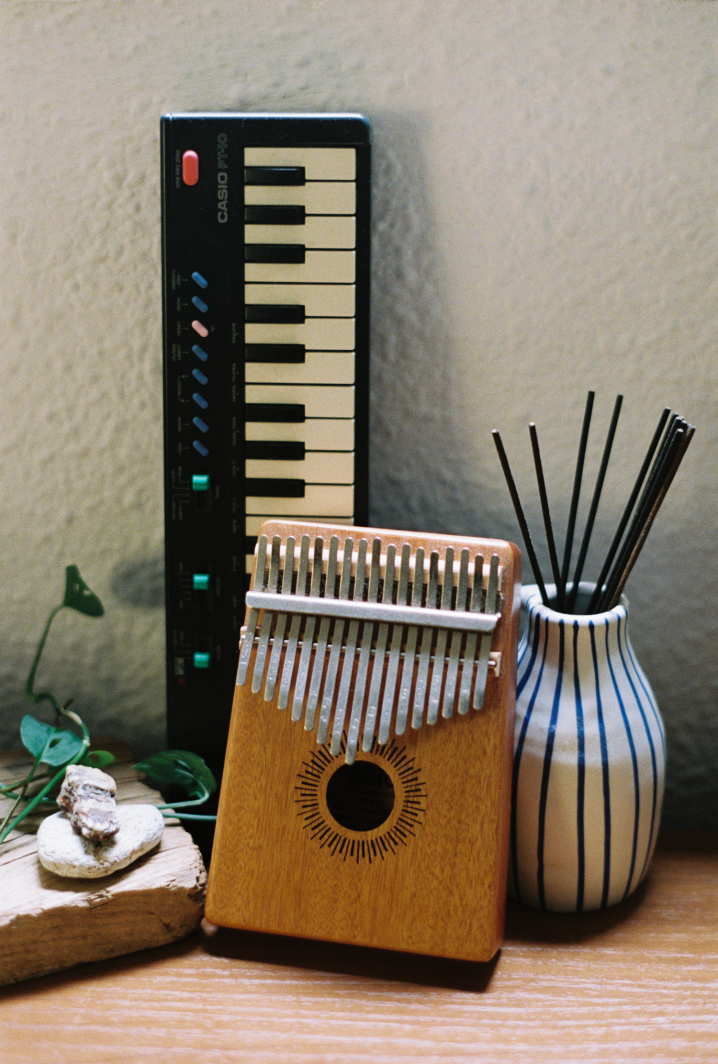
After the piece is complete, how do you audition the results? What are your reactions to hearing your music in a different context, setting, or sound system?
When the moment to audition the results arrives, I have already performed the piece so many times or listened to it a lot during the mixing process that I have to step back for a little while and kind of forget it is mine. When I am ready to reestablish that relationship, I grab my Sony WH-1000XM5s headphones, go to the Botanical Garden of Valencia, sit right in front of the koi pond and start listening. At home, I listen through my iMac and iPad speakers. I don’t have a car, so I can’t try the typical car speakers test. I still feel quite insecure about my mixes, though, I don’t trust my skills that much yet.
Do you ever procrastinate? If so, what do you usually find yourself doing during those times?
I procrastinate way more than I would like to admit, but not so much when it comes to making music. When I start working on an album or any other type of music-related project, I don’t stop until it is ready. I simply can’t, it is the only thing I think about. There are, however, long periods of time in which I don’t consciously compose at all. I need a reason to work on a project, making music for the sake of making music doesn’t always suit me. I could do it, and I certainly improvise almost every night either at the piano or with my synthesisers, but it is music that gets lost in my mind or my hard drive after a while — I call these pieces “forgotten fragments”. Respecting what I find myself doing when I procrastinate, it goes from watching some food recipes and cat videos on Instagram to binge-watching six-season series on Netflix in a couple of weeks, and I regret nothing.
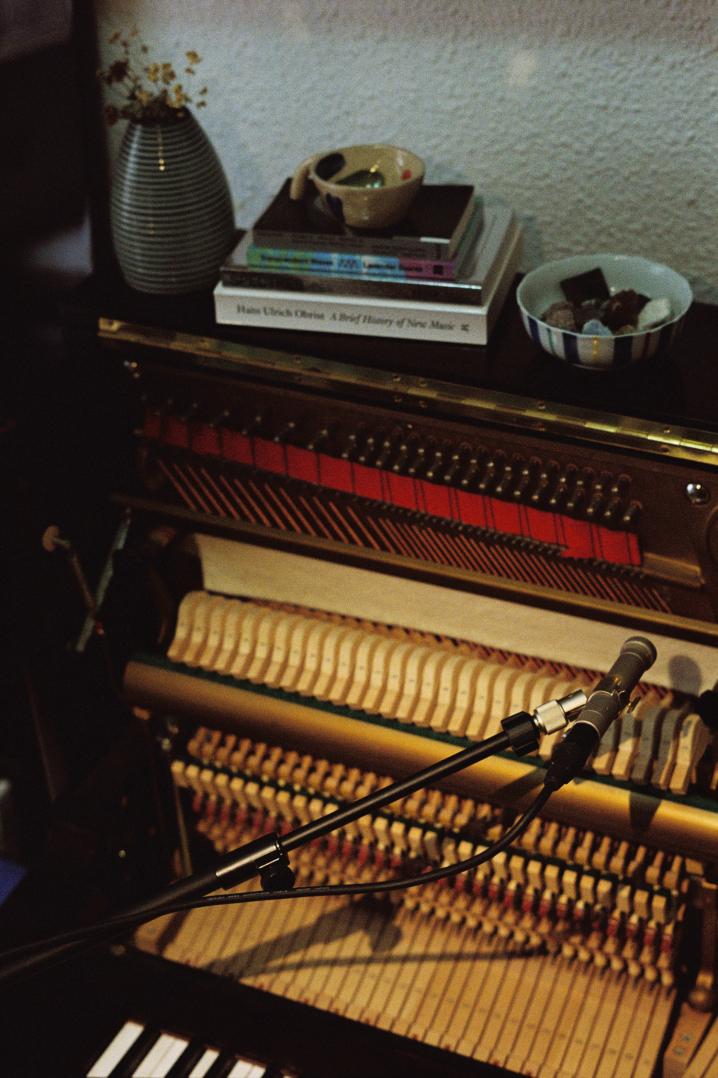
What gets you inspired?
The way the world unfolds around me and the conscious decisions I make to create a more beautiful personal environment. The fresh breeze and soft sunlight of a spring afternoon; a Theo Angelopoulos film; lighting a candle, drinking some wine and listening to my favourite albums; the way Seraphina’s eyes shine when she smiles; reading a random quote in a random page of a random book I picked from the shelf of a bookstore in Prague; growing aromatic herbs in the kitchen; Dieter Rams’ minimalist designs; an early morning walk on the beach; playing the piano after a long absence; and so much more.
And finally, what are your thoughts on the state of “electronic music” today?
I am most definitely not the right person to answer this question. At the end of the day, music, especially the mainstream kind, is and has always been a clear reflection of who we are as a society and where we find ourselves in history, as it happens with architecture, literature and visual arts too. So, whatever opinion we have about music probably tells more about us than about anything else. And, in music, as in life in general, there are people pushing boundaries and shaping new roads for us to walk more comfortably, and I am thankful for that.
